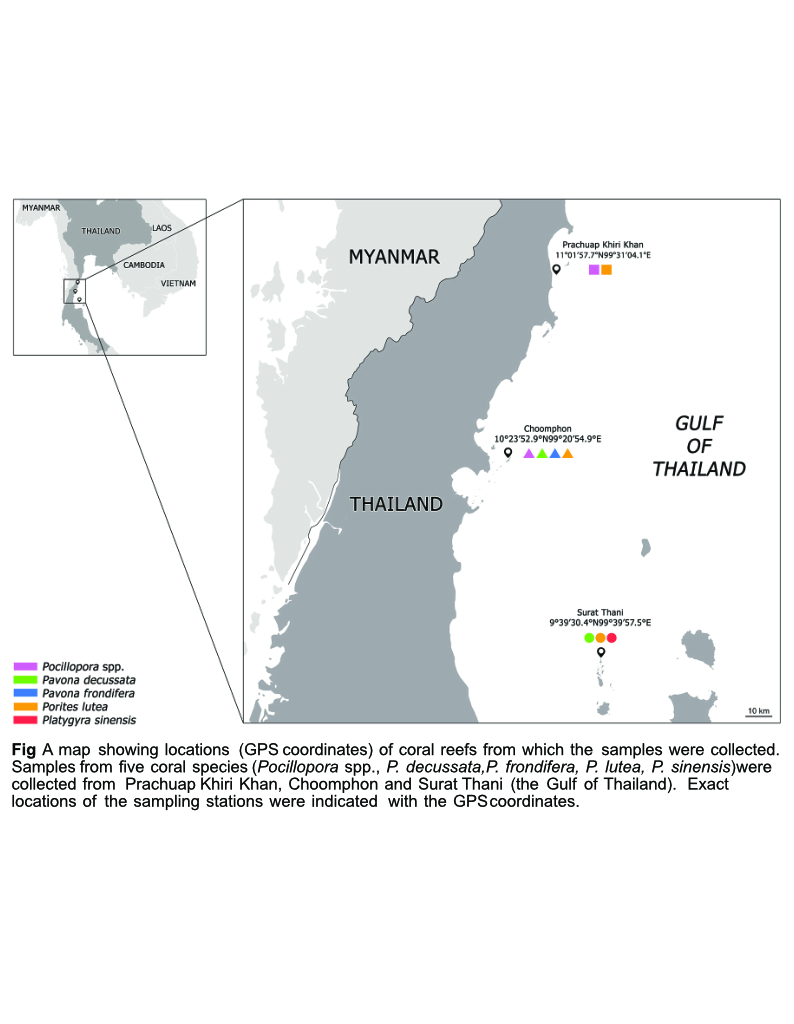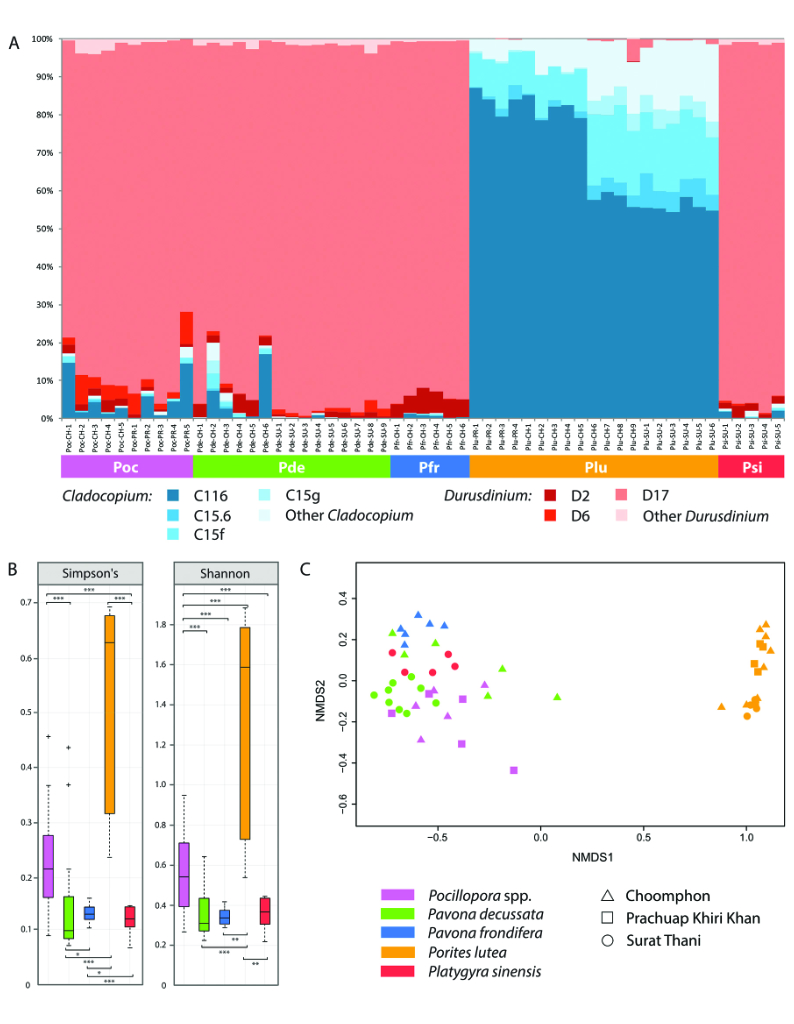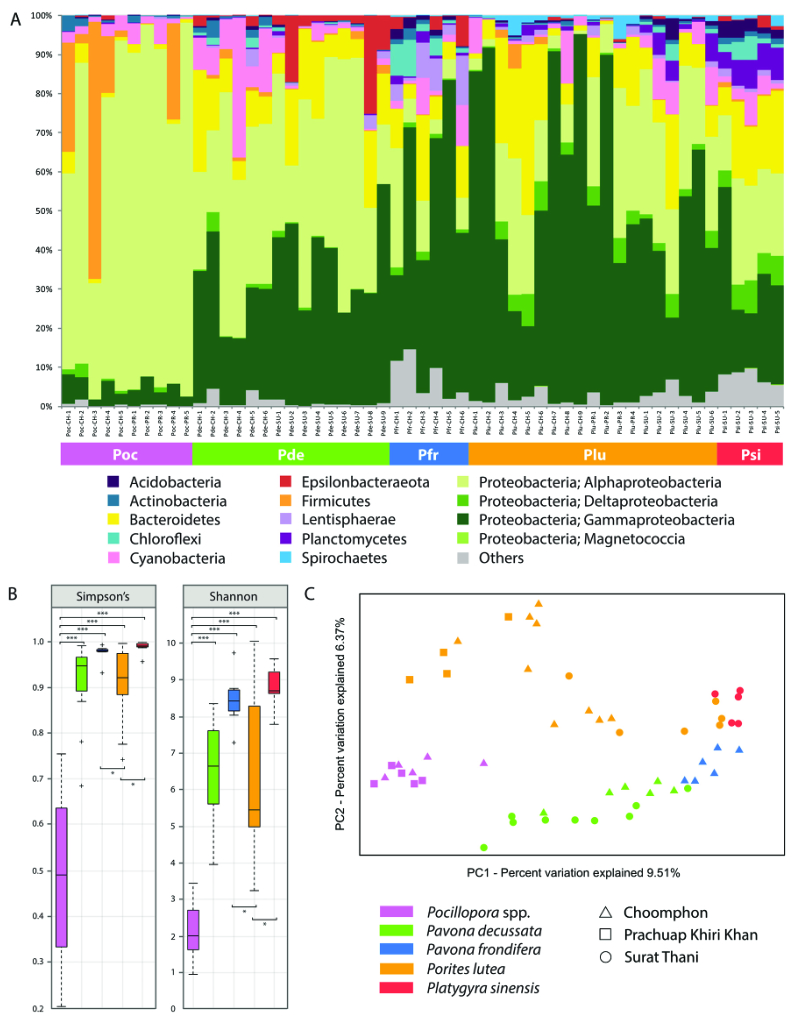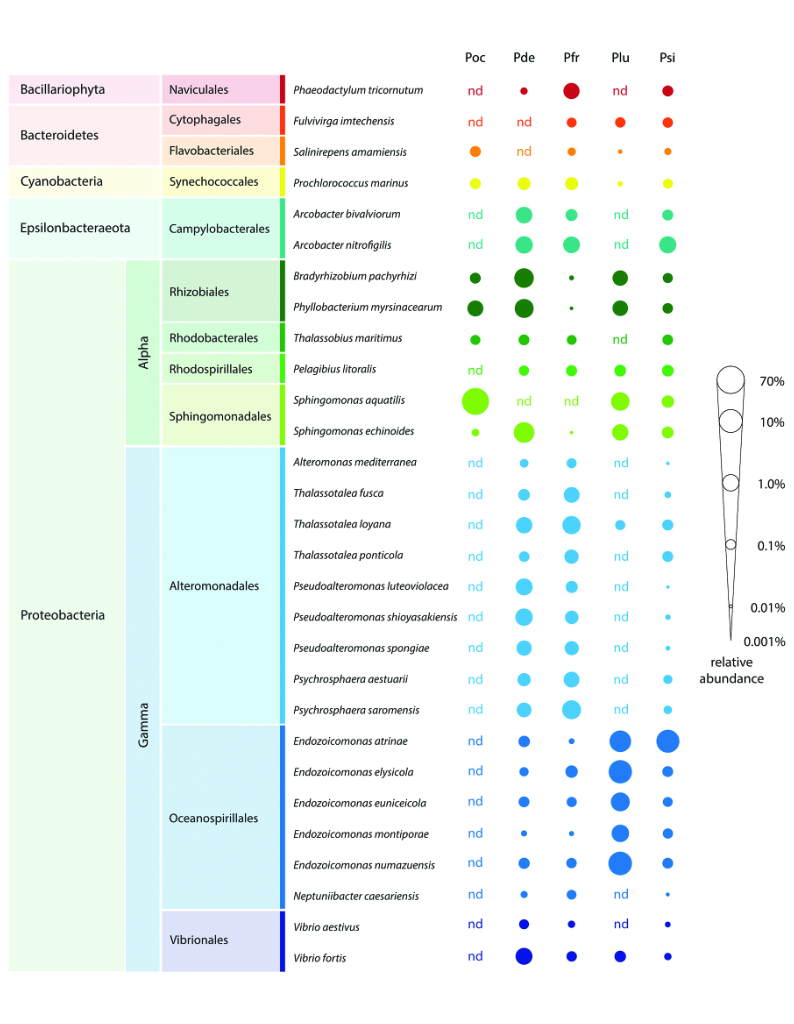+66 2 5646700 Ext 71441 | noc.th@nstda.or.th

ศูนย์โอมิกส์แห่งชาติ

ศูนย์โอมิกส์แห่งชาติ
Porites lutea
Platygyra sinensis
Acropora tenuis
Dynamics of coral-associated microbiomes during a thermal bleaching event
Coral-associated microorganisms play an important role in their host fitness and survival. A number of studies have demonstrated connections between thermal tolerance in corals and the type/relative abundance of Symbiodinium they harbor. More recently, the shifts in coral-associated bacterial profiles were also shown to be linked to the patterns of coral heat tolerance. Here, we investigated the dynamics of Porites luteaassociated bacterial and algal communities throughout a natural bleaching event, using full-length 16S rRNA and internal transcribed spacer sequences (ITS) obtained from PacBio circular consensus sequencing. We provided evidence of significant changes in the structure and diversity of coral-associated microbiomes during thermal stress. The balance of the symbiosis shifted from a predominant association between corals and Gammaproteobacteria to a predominance of Alphaproteobacteria and to a lesser extent Betaproteobacteria following the bleaching event. On the contrary, the composition and diversity of Symbiodinium communities remained unaltered throughout the bleaching event. It appears that the switching and/or shuffling of Symbiodinium types may not be the primary mechanism used by P. lutea to cope with increasing seawater temperature. The shifts in the structure and diversity of associated bacterial communities may contribute more to the survival of the coral holobiont under heat stress.
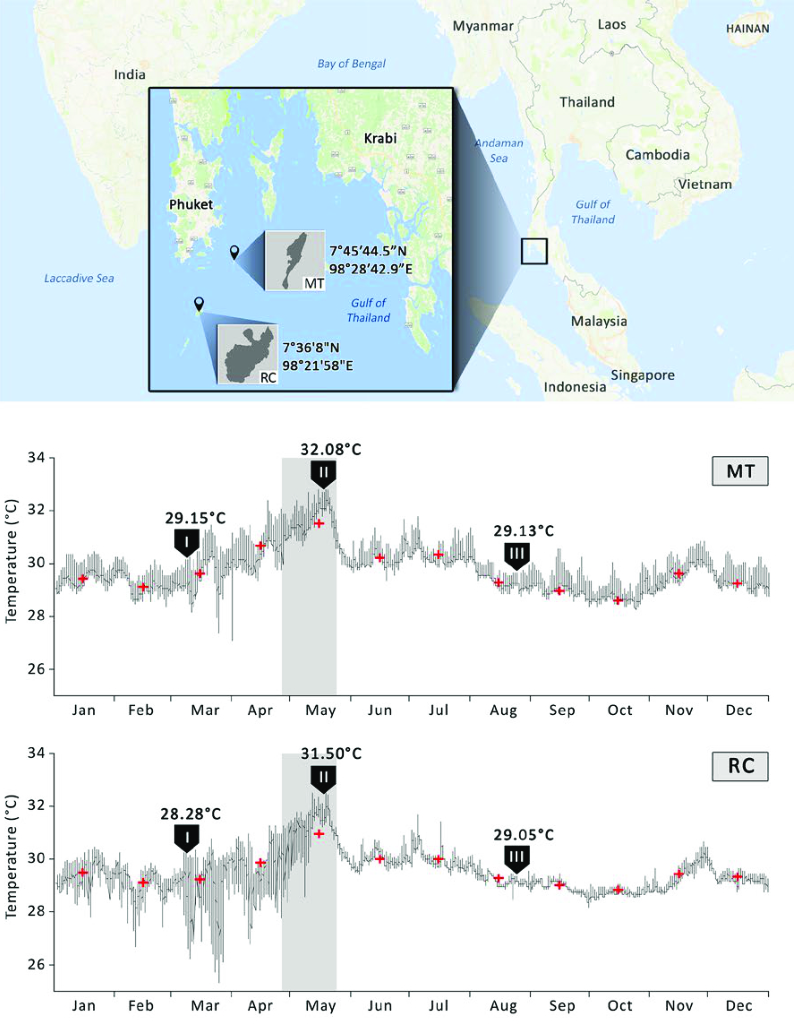
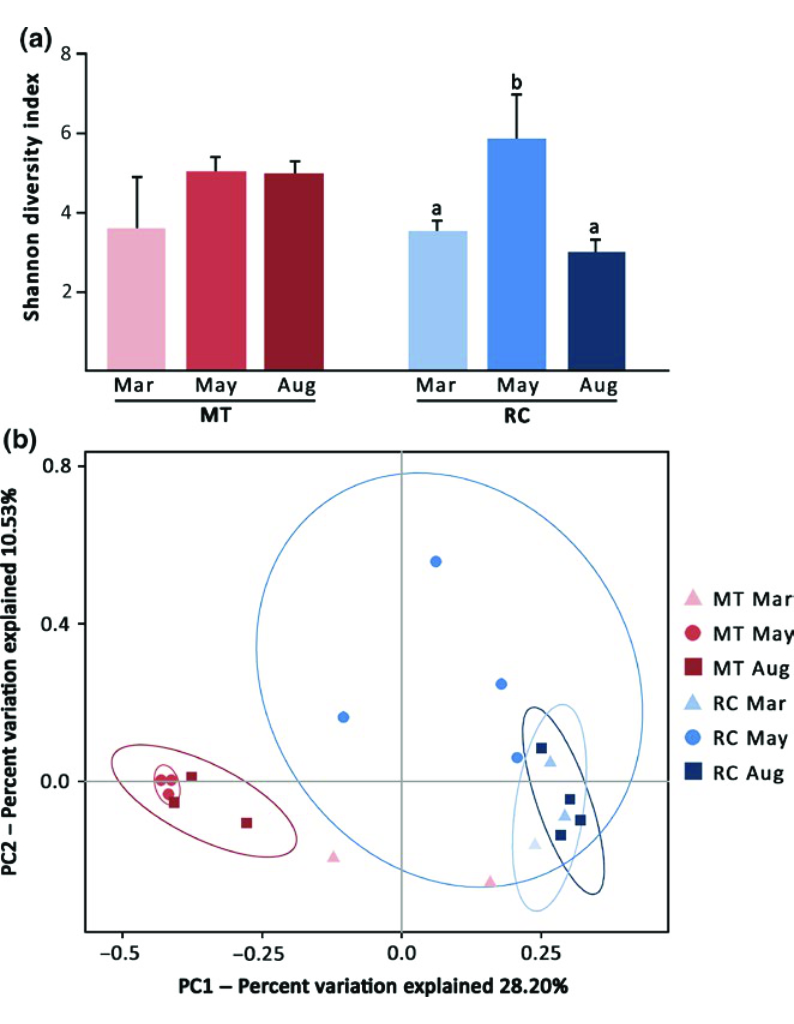
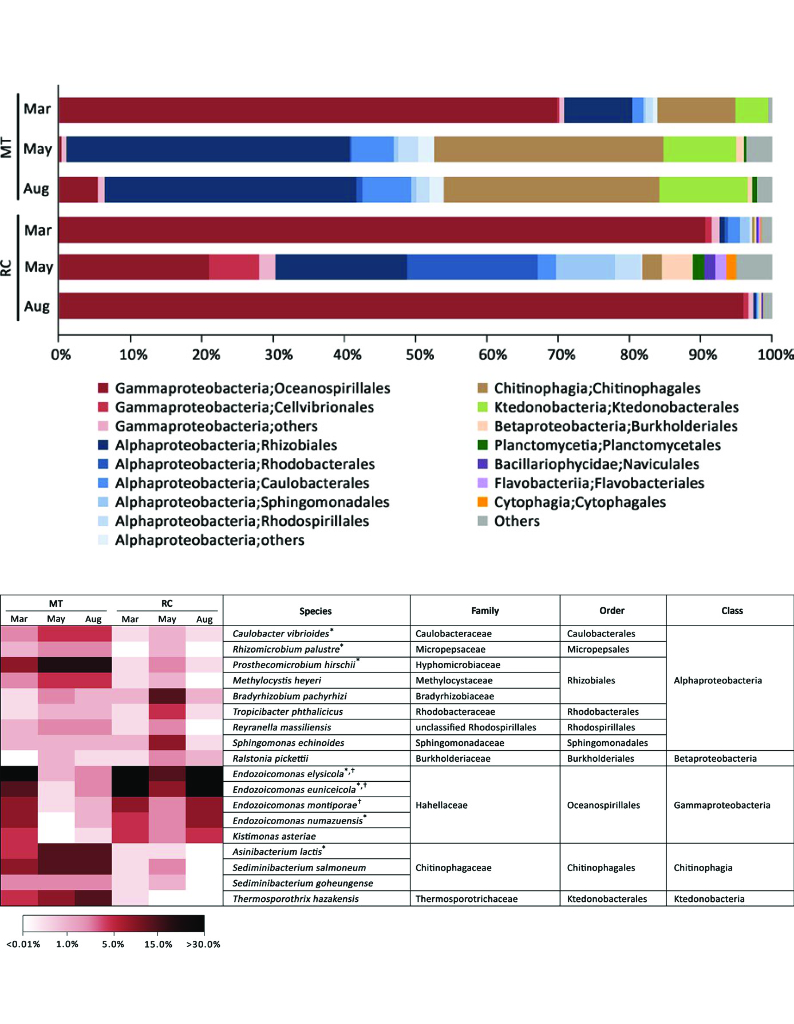
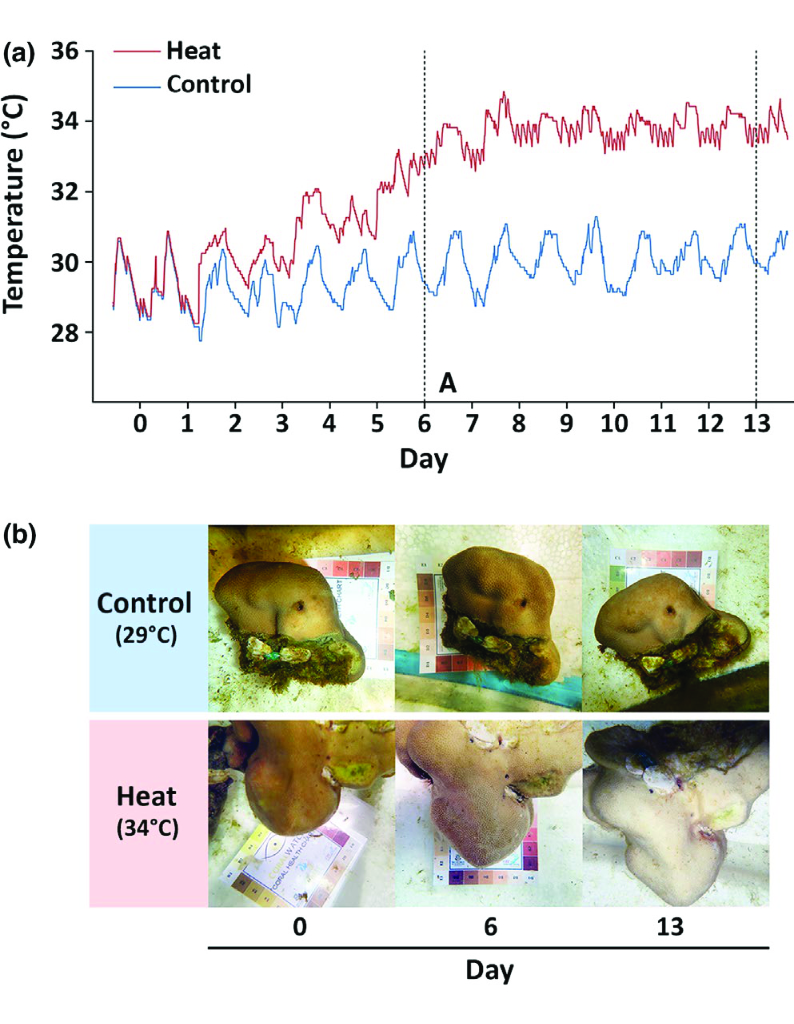
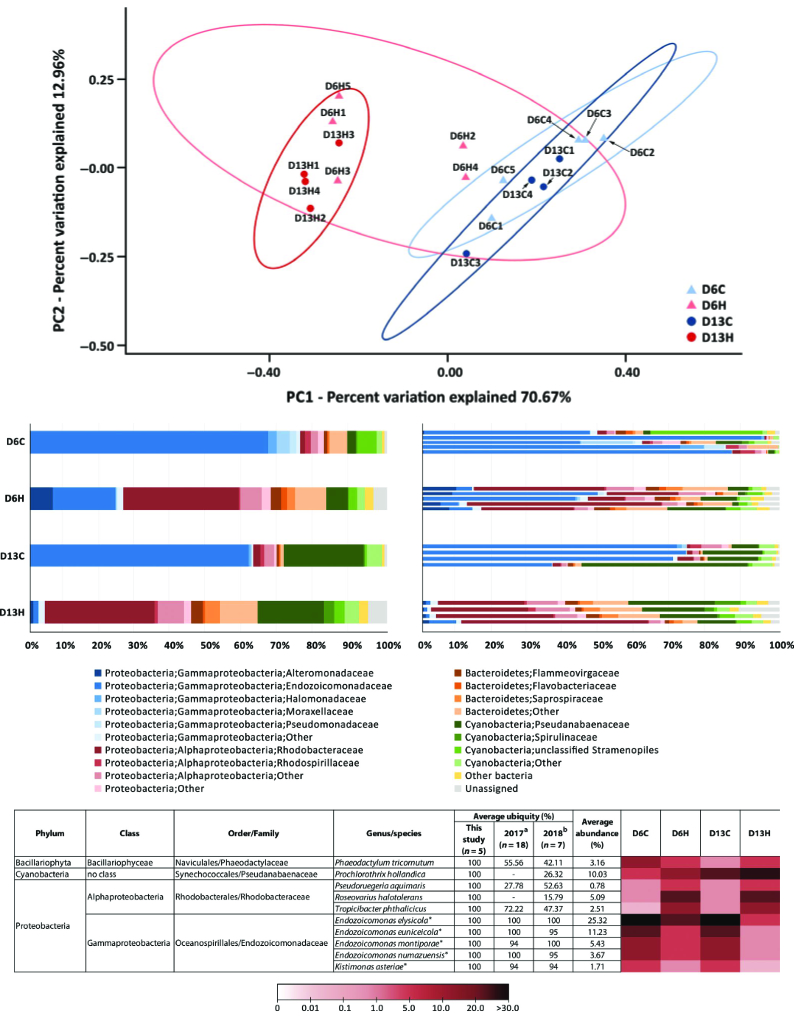
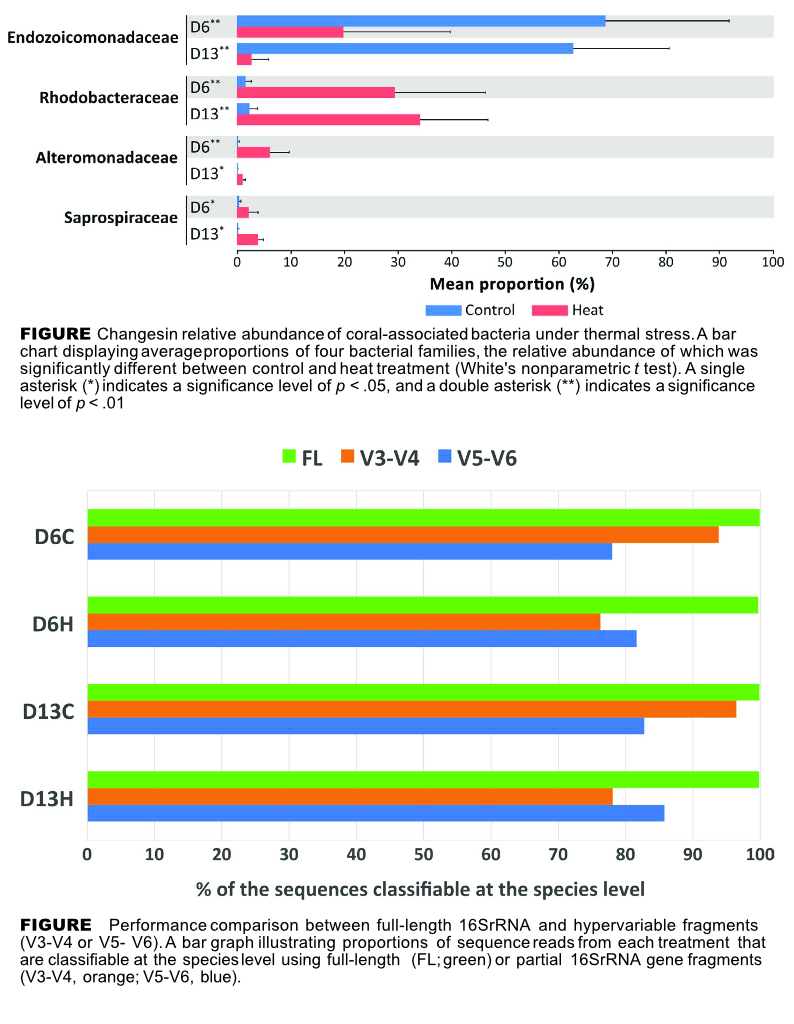

Heatinduced shift in coral microbiome reveals several members of the Rhodobacteraceae family as indicator species for thermal stress in Porites lutea
The coral holobiont is a complex ecosystem consisting of coral animals and a highly diverse consortium of associated microorganisms including algae, fungi, and bacteria. Several studies have highlighted the importance of coral-associated bacteria and their potential roles in promoting the host fitness and survival. Recently, dynamics of coral-associated microbiomes have been demonstrated to be linked to patterns of coral heat tolerance. Here, we examined the effect of elevated seawater temperature on the structure and diversity of bacterial populations associated with Porites lutea, using full-length 16S rRNA sequences obtained from Pacific Biosciences circular consensus sequencing. We observed a significant increase in alpha diversity indices and a distinct shift in microbiome composition during thermal stress. There was a marked decline in the apparent relative abundance of Gammaproteobacteria family Endozoicomonadaceae after P. lutea had been exposed to elevated seawater temperature. Concomitantly, the bacterial community structure shifted toward the predominance of Alphaproteobacteria family Rhodobacteraceae.
Interestingly, we did not observe an increase in relative abundance of Vibrio‐related sequences in our heat-stressed samples even though the appearance of Vibrio spp. has often been detected in parallel with the increase in the relative abundance of Rhodobacteraceae during thermal bleaching in other coral species. The ability of full-length 16S rRNA sequences in resolving taxonomic uncertainty of associated bacteria at a species level enabled us to identify 24 robust indicator bacterial species for thermally stressed corals. It is worth noting that the majority of those indicator species were members of the family Rhodobacteraceae. The comparison of bacterial community structure and diversity between corals in ambient water temperature and thermally stressed corals may provide a better understanding on how bacteria symbionts contribute to the resilience of their coral hosts to ocean warming
Taxonomic profiling of Symbiodiniaceae and bacterial communities associated with Indo-Pacific corals in the Gulf of Thailand using PacBio sequencing of full-length ITS and 16S rRNA genes
Corals live with complex assemblages of microbes including bacteria, the dinoflagellate Symbiodiniaceae, fungi and viruses in a coral holobiont. These coral-associated microorganisms play an important role in their host fitness and survival. Here, we investigated the structure and diversity of algal and bacterial communities associated with five Indo-Pacific coral species, using full-length 16S rRNA and internal transcribed spacer sequences. While the dinoflagellate communities associated with Porites lutea were dominated with Symbiodiniaceae genus Cladocopium, the other four coral hosts were associated mainly with members of the Durusdinium genus, suggesting that host species was one of the underlying factors influencing the structure and composition of dinoflagellate communities associated with corals in the Gulf of Thailand. Alphaproteobacteria dominated the microbiomes of Pocillopora spp. while Pavona frondifera and P. lutea were associated primarily with Gammaproteobacteria. Finally, we demonstrated a superior performance of full-length 16S rRNA sequences in achieving species-resolution taxonomic classification of coral-associated microbiota.
